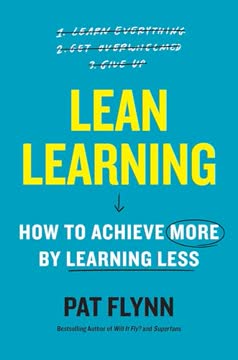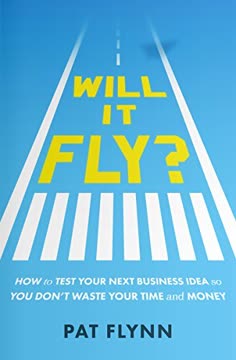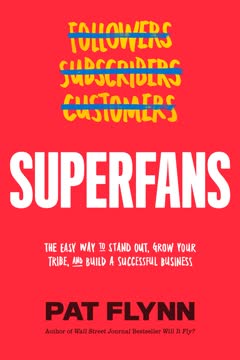Key Takeaways
1. Prioritize Action Over Endless Information Consumption
“Knowledge, if it does not determine action, is dead to us.”
Stop over-learning. The author, Pat Flynn, confesses to being an "over-learner," constantly consuming content without applying it. This information hoarding led to paralysis and frustration, especially after his layoff during the Great Recession. He realized that knowledge alone is insufficient; action is the true catalyst for progress.
Information overload. In today's world, we are inundated with content, leading to "inspiration overload" and overthinking. This constant consumption often delays simple decisions and prevents forward movement. The key is to shift from passive consumption to active application.
Action is progress. Pat's business coach, Jeremy, famously told him to "Just freaking get started" (JFGS) when he was stuck planning his first eBook. This blunt advice highlighted that all his planning was hindering actual progress. Real learning begins when you start doing, not just consuming.
2. Simplify Your Next Steps with the Keystone Question
“If this were easy, what would it look like?”
Unlock clarity. This "Keystone Question" (ITWEWWILL), inspired by Tim Ferriss, helps cut through overwhelm and identify the minimum viable action (MVA) needed to move forward. It encourages you to strip away perceived complexities and focus on the simplest path.
Real-world application. When Pat and Caleb invented the SwitchPod tripod, they asked ITWEWWILL at every stage. This led them to:
- Prototype with cardboard boxes.
- Determine dimensions by asking YouTubers at a conference.
- Expand by white-labeling accessories instead of building new products from scratch.
Start where you are. The story of Kelvin Doe, a young innovator from Sierra Leone, further illustrates this. He learned electronics by dismantling discarded parts, asking "If learning about electronics were easy, what would it look like?" His answer was to learn by doing, using available resources.
3. Embrace Imperfection and Learn from Every Mistake
“You have to be a disaster before you become the master.”
Mistakes are teachers. Our society often demonizes failure, but for a Lean Learner, mistakes are invaluable learning opportunities. They provide immediate feedback, stimulate curiosity, and deepen understanding in ways theoretical knowledge cannot.
Types of failures. Harvard researcher Amy Edmondson identifies three types:
- Basic failures: Not following known "right ways."
- Complex failures: Due to combined factors in familiar situations.
- Intelligent failures: Unexpected results from new attempts in new contexts.
Intelligent failures, involving small, psychologically safe risks, are crucial for innovation and growth.
Building resilience. Pat's early business faced a cease-and-desist letter for trademark infringement. Instead of quitting, he adapted, changed his brand, and learned invaluable legal lessons. This ordeal built resilience, transforming a potential defeat into a driver of growth.
4. Leverage Champions: Mentors, Peers, and Community
“Alone, we can do so little; together, we can do so much.”
Support system. Nobody achieves greatness alone. Champions—friends, family, peers, and mentors—provide crucial support, guidance, and accountability. Dr. Barbara Cohen's podcasting journey, despite her fear of technology, thrived due to community support.
Types of champions:
- Friends and Family: Provide emotional support and celebrate wins.
- Peers: Offer unique insights and collaboration from shared experiences (e.g., mastermind groups).
- Virtual Mentors: Experts who share knowledge through content (books, podcasts).
- Personal Mentors: Provide tailored one-on-one guidance and accountability.
Reciprocity is key. Being a champion for others by offering encouragement or sharing resources strengthens the community. This mutual exchange enriches the learning experience for everyone involved.
5. Protect Your Focus with Just-in-Time Information
“Structured guidance is better than random cherry-picking.”
Unsubscribe from noise. Just like Pat's golf buddy George, who excelled by avoiding endless golf theories, Lean Learning advocates for "unsubscribing" from unnecessary information. Focus only on what's essential for your next step.
Just-in-Time Information (JITI). This core Lean Learning principle means acquiring only the information needed for the immediate task. Pat applied this when writing his study guide, focusing solely on formatting and content before moving to cover design or sales pages.
Combatting FOMO. The fear of missing out (FOMO) can derail progress. Strategies include:
- Implementing a "For Later" system for non-urgent info.
- Trusting your chosen path.
- Setting clear information boundaries.
- Using FOMO as a checkpoint to reassess needs.
- Embracing "time blocking as a verb" to create focused, distraction-free work periods.
6. Create Voluntary Force Functions for Accelerated Growth
“If the road is easy, you’re likely going the wrong way.”
Intentional pressure. Voluntary Force Functions are deliberate, self-imposed challenges that compel action and accelerate learning. Pat's first public speaking engagement, despite his fear, was a prime example, forcing him to prepare intensely.
Recipe for effective force functions:
- A Leap of Faith Moment: Committing to "starting now."
- A Time-Locked Commitment: A non-negotiable deadline.
- High Stakes: Enough pressure to motivate, not paralyze.
- Meaningful Challenge: Aligned with personal growth and values.
- Rewards on the Other End: Unlocking new opportunities.
Strategic sharing. While publicly announcing goals can backfire (premature accomplishment), sharing them with "higher status" individuals whose opinions you respect can provide powerful motivation and accountability.
7. Regularly Assess Your Path: Persist or Pivot with Purpose
“Life is not a journey you want to make on autopilot.”
Revisit your "why." Periodically reconnecting with your core purpose, cause, or belief is crucial for guiding decisions. Shane and Jocelyn Sams' entrepreneurial journey was driven by their "why"—the freedom to be there for their family.
The 3 Ps of Personal Pursuit:
- Progress: Celebrate milestones and assess if you're moving forward.
- Passion: Evaluate if your enthusiasm and energy are sustained.
- Purpose: Ensure alignment with your core values and long-term vision.
Personal mission statement. Create a clear, concise articulation of your values and vision. This "North Star" helps evaluate opportunities and steer you back on course when feeling misaligned.
8. Combine Micro Mastery with Bold Quantum Leaps
“Fortune favors the bold.”
Micro Mastery. This involves focusing on small, specific, incremental improvements that compound over time. Ori Bengal, "Couch Surfing Ori," dramatically improved his art by hyper-focusing on one tiny detail (e.g., brush strokes, specific colors) at a time across thousands of daily pieces.
Compounding effects. Small improvements in a process, like a sales funnel, can lead to exponential results. Doubling one conversion rate can double sales without increasing traffic.
Quantum Leaps. These are sudden, substantial shifts that catapult progress, requiring calculated risks and pushing beyond comfort zones. Nathan Barry's decision to "double down" on ConvertKit, shutting down his profitable publishing business, transformed his company into an industry leader.
9. Solidify Your Learning by Teaching and Leading Others
“While we teach, we learn.”
Teaching reinforces learning. Sharing your knowledge forces you to break down complex concepts, identify gaps in your understanding, and articulate ideas effectively. Pat's "eBooks the Smart Way" guide not only helped others but also streamlined his own writing process.
Benefits of teaching:
- Deepens your own understanding.
- Establishes credibility and authority.
- Builds meaningful relationships.
- Creates a positive ripple effect.
Work in public. "Learning out loud" by sharing your process, challenges, and insights publicly (e.g., blogging, social media, open-source projects) invites feedback, collaboration, and builds trust. Arvid Kahl's transparent development of Podscan.fm is a prime example.
Build community. Creating and nurturing spaces for like-minded individuals, whether online or in-person, fosters shared growth and mutual support. Pat's SPI Community and Card Party events exemplify this, turning individual successes into collective impact.
Last updated:
FAQ
1. What is "Lean Learning: How to Achieve More by Learning Less" by Pat Flynn about?
- Core Premise: The book introduces "Lean Learning," a method for acquiring new skills and knowledge efficiently by focusing on just what you need, taking action quickly, and avoiding information overload.
- Personal and Professional Growth: Pat Flynn shares his journey from over-learner to successful entrepreneur, illustrating how Lean Learning can help anyone adapt, grow, and thrive in a rapidly changing world.
- Action-Oriented Framework: The book emphasizes moving from passive consumption to active implementation, using real-life stories, practical exercises, and a step-by-step process.
- Audience: It's designed for entrepreneurs, professionals, lifelong learners, and anyone overwhelmed by too much information or struggling to turn inspiration into results.
2. Why should I read "Lean Learning" by Pat Flynn?
- Overcome Information Overload: The book addresses the modern problem of being paralyzed by too much information and offers a clear path to cut through the noise.
- Practical, Actionable Advice: Pat Flynn provides a simple, repeatable framework that helps readers move from inspiration to action, making learning more effective and less overwhelming.
- Real-World Examples: The book is filled with relatable stories—from preschoolers solving real problems to entrepreneurs making bold pivots—that demonstrate Lean Learning in action.
- Applicable to All Areas: Whether you want to learn a new skill, start a business, or simply be more productive, the Lean Learning method can be tailored to any goal or challenge.
3. What are the key takeaways from "Lean Learning" by Pat Flynn?
- Learn Just Enough: Focus on acquiring only the information you need to take the next step, rather than trying to know everything before starting.
- Action Over Accumulation: Progress comes from doing, not just learning; mistakes and imperfection are essential parts of the process.
- Champions Matter: Surround yourself with mentors, peers, and supportive communities to accelerate learning and overcome obstacles.
- Regular Reflection: Periodically assess your progress, passion, and purpose to decide whether to persist or pivot.
- Teach to Master: Sharing your knowledge with others reinforces your own learning and creates a positive feedback loop.
4. What is the Lean Learning method as defined by Pat Flynn?
- Four-Step Process: 1) Identify what you want to accomplish next, 2) Learn only what you need to move forward, 3) Implement what you’ve learned, 4) Review and repeat to refine and deepen your skills.
- Simplicity Over Complexity: The method intentionally avoids overcomplicating learning, focusing on efficiency and effectiveness.
- Just-in-Time Information: Only seek out information relevant to your immediate next step, avoiding the trap of "just-in-case" learning.
- Iterative Improvement: Each cycle of the process builds on the last, allowing for continuous growth and adaptation.
5. How does Pat Flynn address information overload and inspiration overload in "Lean Learning"?
- Inspiration Matrix: Flynn introduces a tool to categorize ideas and inspirations into Passion Pursuits, Critical Commitments, Recreational Inspirations, and Junk Sparks, helping you prioritize what matters.
- Selective Curiosity: Encourages being intentional about which inspirations to pursue, rather than chasing every new idea.
- Time Travel Exercise: Recommends visualizing your future self after pursuing an inspiration to determine if it’s truly worth your time.
- Saying No: Emphasizes the importance of eliminating distractions and "Junk Sparks" to focus energy on meaningful pursuits.
6. What is "Just-in-Time Information" and how does it work in Lean Learning?
- Definition: Just-in-Time Information (JITI) is the practice of seeking out only the information you need for your immediate next step, rather than stockpiling knowledge for potential future use.
- Prevents Overwhelm: This approach helps avoid information overload and keeps you focused on actionable tasks.
- Practical Application: Flynn shares examples from his own business, showing how JITI allowed him to make progress quickly by learning only what was necessary at each stage.
- Tools and Boundaries: Suggests using "For Later" folders and setting information boundaries to manage FOMO and stay on track.
7. What role do mistakes and imperfection play in the Lean Learning approach?
- Mistakes as Learning Opportunities: Flynn argues that mistakes are not failures but essential feedback that deepen understanding and accelerate growth.
- Embracing Imperfection: The book encourages starting before you feel ready and accepting that your first attempts will be imperfect.
- Types of Failure: Cites research on basic, complex, and intelligent failures, advocating for "intelligent failure"—small, recoverable risks that lead to innovation.
- Resilience and Innovation: Learning from mistakes builds resilience and often leads to unexpected breakthroughs.
8. How does Pat Flynn recommend you protect your progress and stay focused in "Lean Learning"?
- Unsubscribe and Unfollow: Actively remove sources of unnecessary information and distractions from your environment.
- Time Blocking: Use intentional scheduling to create distraction-free periods for focused work, treating these blocks as non-negotiable.
- Dealing with Anti-Champions: Recognize and distance yourself from negative influences or "crabs in a bucket" who may try to pull you down.
- Joy of Opting Out: Learn to say no to opportunities that don’t align with your core values or current priorities, preserving energy for what matters most.
9. What are "Voluntary Force Functions" and "Power 10s" in the context of Lean Learning?
- Voluntary Force Functions: These are self-imposed challenges or constraints (like deadlines, public commitments, or high-stakes situations) that force you to take action and grow.
- Recipe for Success: Effective force functions include a leap of faith, a time-locked commitment, high stakes, a meaningful challenge, and clear rewards.
- Power 10s: Inspired by rowing, a Power 10 is a short, intense burst of focused effort to break through plateaus or accelerate progress.
- Strategic Use: Both concepts are about intentionally creating pressure or urgency to catalyze learning and achievement, rather than waiting for external circumstances to force your hand.
10. How does "Lean Learning" by Pat Flynn help you decide when to persist or pivot?
- Self-Assessment Sessions: Regularly schedule time to reflect on your progress, passion, and purpose (the "three Ps") to evaluate if your current path is still right for you.
- Reconnect with Your Why: Use personal mission statements and "Why-FI" (Why Focused Introspection) to ensure your actions align with your core values and long-term vision.
- Seek Feedback: Gather input from mentors, peers, and trusted friends to gain perspective and identify blind spots.
- Embrace Change: Recognize that pivoting is not failure but a strategic adjustment to stay aligned with your goals and values.
11. What is Micro Mastery versus Quantum Leaps in Lean Learning, and how do they accelerate growth?
- Micro Mastery: Focuses on breaking down skills into the smallest possible components and improving one at a time, leading to compounding progress.
- Quantum Leaps: Involve bold, high-impact moves or decisions that can rapidly accelerate your trajectory, such as doubling down on a business or making a major career shift.
- When to Use Each: Micro Mastery is best for steady, sustainable growth, while Quantum Leaps are for moments when a significant breakthrough is needed.
- Combined Approach: Flynn advocates using both—incremental improvements for long-term mastery and bold moves when the situation calls for it.
12. How does teaching and working in public reinforce learning in the Lean Learning framework?
- Teaching to Learn: Sharing your knowledge with others forces you to clarify your understanding and exposes gaps in your knowledge.
- Learning Out Loud: Documenting your process and progress publicly (via blogs, social media, or community forums) creates accountability and invites feedback.
- Building Community: Engaging with others—whether by teaching, collaborating, or participating in mastermind groups—amplifies learning and creates opportunities for growth.
- Ripple Effect: Teaching not only solidifies your own mastery but also helps others, creating a virtuous cycle of learning and leading.
Review Summary
Lean Learning receives mostly positive reviews, with readers praising its practical advice on efficient learning and goal achievement. Many appreciate the book's focus on prioritizing important information and taking action over excessive research. Some readers found it particularly helpful for entrepreneurs and lifelong learners. A few reviewers noted that the book shifted focus towards entrepreneurship partway through. Overall, readers found the book valuable for improving learning strategies and productivity, with some considering it a must-read for personal development.
Similar Books
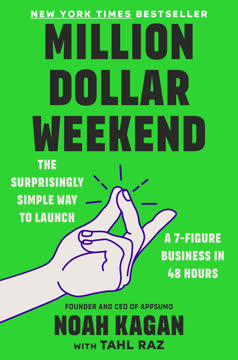
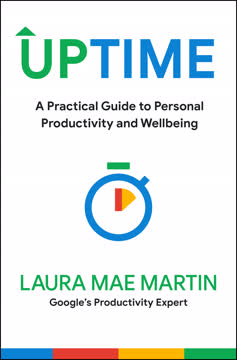
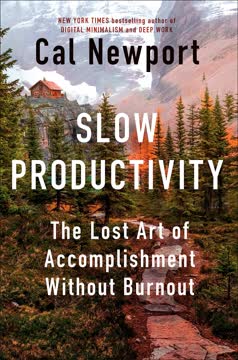
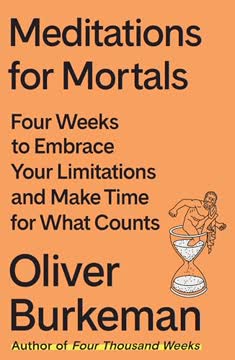
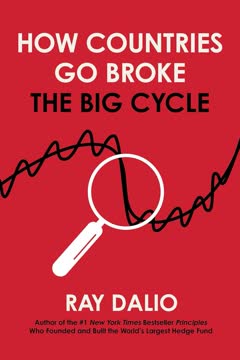
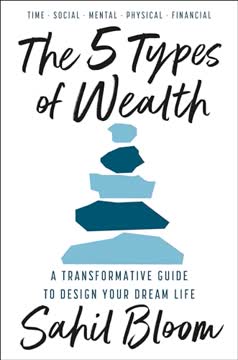
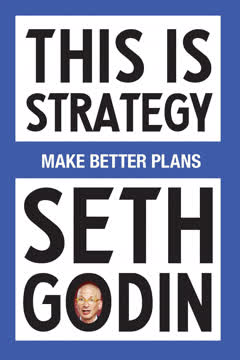
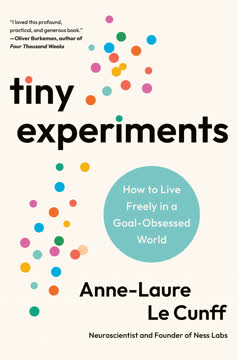
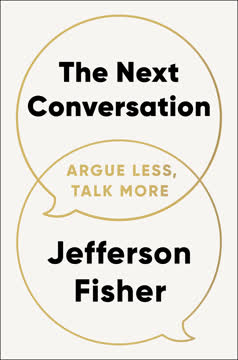

Download PDF
Download EPUB
.epub digital book format is ideal for reading ebooks on phones, tablets, and e-readers.
